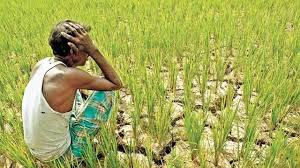“Indian Farm Bill- Redefining Middlemen”- Transforming The Traditional Ways
- Yashasvi Sharma
- Dec 6, 2020
- 2 min read
The Present Scenario
The Indian agriculture system revolves around the middlemen. Farmers don’t sell their produce directly to the consumers. The trade takes place through intermediaries. These middlemen are often called ‘Arhtiya’. The fundamental nature of this group is commissioning. They arrange for all the supporting functions such as cleaning and maintaining the products which are required by the farmers to make his produce available for selling in the local mandis.

Often it is seen that farmers are not able to get minimum support price for their produce due to interference of these middlemen. Their produce is declared substandard, and they are forced to sell the same at less than the price set by the government. Commission agents survive on the income of farmers.
Also, these ahrtiya’s are money lenders to the farmers, and the rate of interest is higher than the standard market rate. Since the rural finance systems in India are not as strong as the urban one, these farmers are forced to avail the loan from the private sector.
The Attempt
The farm bills introduced by the Modi government version 2.0 directly hinges at the role of these arhtiyas as over the years it is seen that these middlemen exploit the farmers as the present system forces the farmer to sell their produce through local arrangements with the help of these middlemen.

The Farmers’ Produce Trade and Commerce (Promotion and Facilitation) Bill, 2020 - The bill hampers the role of intermediaries and offers autonomy to farmers to sell products across states.
The Farmers (Empowerment and Protection) Agreement of Price Assurance and Farm Services Bill, 2020 – The bill focuses on providing price assurance to the farmers before sowing crops in the field. The aim is to reduce market unpredictability and uncertainty and provide financial support to farmers.
The Essential Commodities (Amendment) Ordinance, 2020 – The government aim at regulating the essential commodities in the market.
The Pitfall
The prima facia conclusion can be made that these bills are there to remove the role of mediators and provide benefits to the farmers directly. But what government fails to understand that no system in the world allows farmers to sell their product directly to the consumers. In western culture, the role of intermediaries is taken by supermarkets, and they exploit them.

The focus of the government should not be on eliminating the middlemen but to regulate the market laws & norms as it will ensure accountability and credibility in the local markets to the farmers. Standardizing the existing market structures across the states is a possible solution for the same. The middlemen should be treated as service providers, and strict norms should be there to guide their actions and exploitation.


Comments